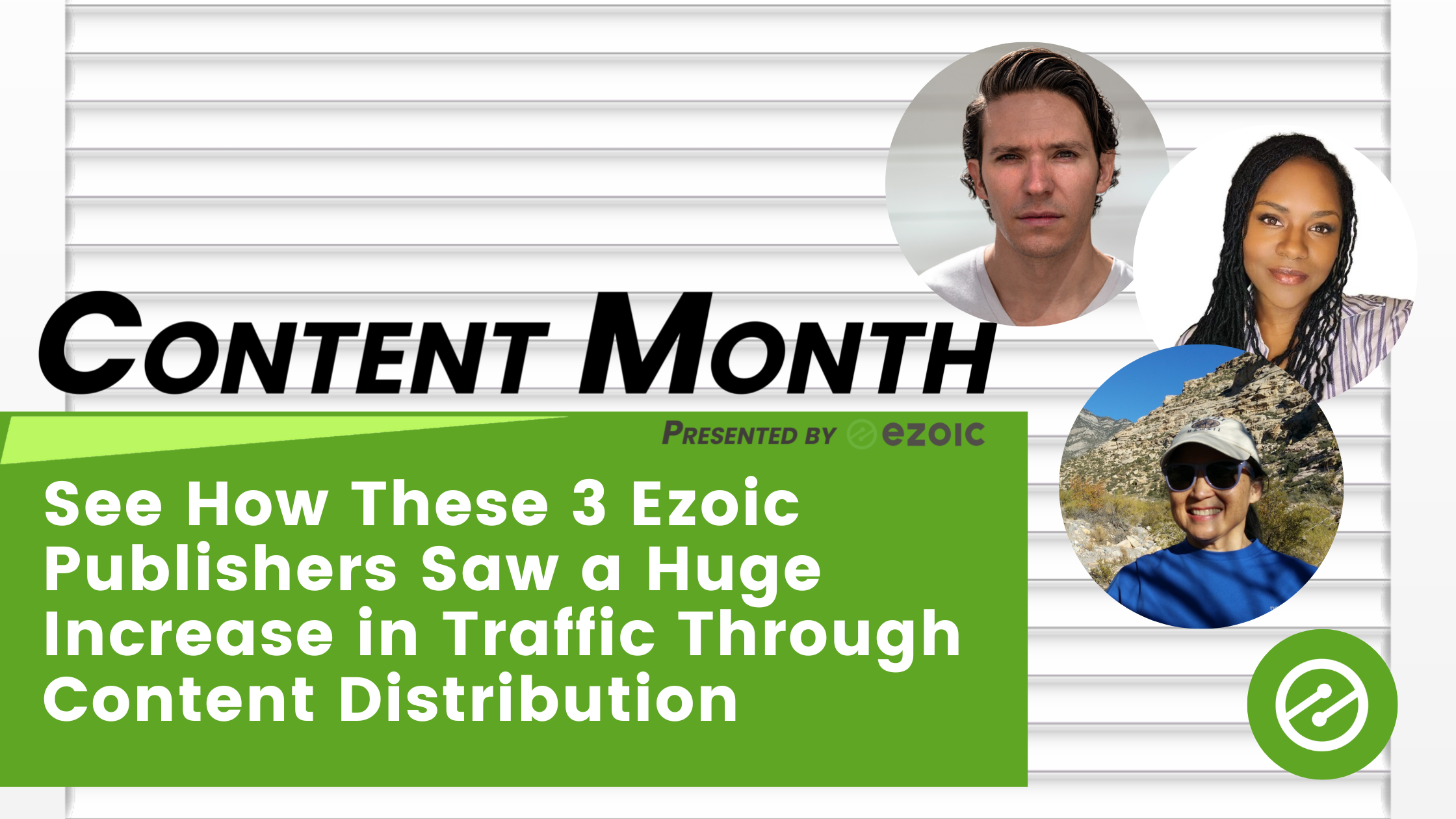In digital publishing, we’ve all heard that ubiquitous phrase: content is king. With such a heavy emphasis on creating content, it can sometimes feel that there’s a lack of information about strategizing the distribution of your content. Content distribution is essentially anything a publisher does to expand their content’s reach, whether that be sending it to others directly, submitting it to other trade publications, posting to social media, or anything else of the sort.
Some recent studies have shown that 91% of consumers check their email at least once a day. For social media, we also know that the average daily usage for a typical social media user is 2 hours and 27 minutes.
Some of the top ways bloggers can start to drive traffic are by social media and email. However, many businesses (and websites) do not know how to effectively distribute their content across multiple channels to maximize traffic, and in turn, get more revenue. A survey by Semrush found that 78% of those who believe their content marketing was very successful in 2021 had a documented content marketing strategy.
We asked three prominent Ezoic publishers across three different niches about their strategies with email and social media marketing. In this blog, we’ll compile some of their key tips they have for other publishers to help you get your distribution strategy perfected.
Meet the publishers

Caleb J. Spivak
Level: VIP
Top Social Media platform: Facebook
Social Media accounts to follow:
- Twitter: https://twitter.com/whatnowatlanta
- Facebook: https://www.facebook.com/wnatl

Arielle Phoenix
Level: 3
Top Social Media Platform: Instagram
Social Media accounts to follow:
- Twitter: https://twitter.com/ArielleCPX
- YouTube: https://youtube.com/c/LondonStax
- Instagram: https://instagram.com/ArielleCPX

Bernie Carr
Level: 1
Top Social Media Platform: Pinterest
Social Media accounts to follow:
After asking all three publishers the same set of questions, we’ve compiled their responses into some core findings about using email and social media to your advantage.
Lesson 1: Work smarter, not harder
Almost everyone we spoke to emphasized how they repurpose content across different platforms. People have a strong appetite for email and social media, and that means you may not have a new piece of content to promote for every single social media post or every single email that goes out.
- Spivak: “With the algorithms on social media that dictate when and how your followers see content, we’ve learned to publish our content more than once to reach more of our audience; we post each article at least twice on both Twitter and Facebook, 24HRS apart from each other.”
For Phoenix, this looks like creating some evergreen content via email, or automating content to go out over time in one sitting.
- Phoenix: “ I am currently building email lists and writing an evergreen automated set of emails that will be useful and relevant for the user, whenever they join the list… Some of these are bite-sized versions of blog posts already on the site and urge the reader to visit the page if they want to learn more on the topic.”
- As far as automation, here are her tips: “Keep it simple. First, plan your content and emails and then schedule and automate… It then only takes 30 minutes out of your time to engage with influencers and the community rather than all of your time trying to be everywhere at once. Social media is a hungry beast! So try to do the bulk of the work; whether that be creating pins or writing captions, in one sitting.”
Lesson 2: Provide Unique Value to Keep Your Audience Happy
Your followers from social media, or your email subscribers, just might be your most devoted audience members. For Spivak, “ our newsletter subscribers are our most-engaged readers, visiting our publications multiple times per week if not daily, or even multiple times per day.”
- Spivak: “With social media and email, if you’re not providing value, you’re not going to retain your audiences.”
Lesson 3: Strategically Use Each Platform’s Benefits to Their Fullest Extent
We can summarize the core of this tip with this quote from Phoenix: “I mentioned that some platforms do better than others depending on the industry, and some are more rewarding. So, you really need to know your audience and where they virtually hang out, what type of posts the top accounts are sharing, etc. Throwing the same content at every platform and trying to build a following on every platform is a waste of time, and the results will very likely be disappointing.”
Lesson 4: Find an appropriate cadence
It may not be worth your time to post every single day to Instagram, and instead perhaps your audience would be more content with daily emails. Either way, it is important to find the right balance of content so that your audience doesn’t tire of your content, but still sees your content enough that they remember who you are.
- Spivak: “Figuring out the right frequency is also key so you also don’t inundate your audiences’ already full inboxes.”
The “right balance” could look different for everyone. For Carr, she has it figured out down to a science. She posts every single article to Facebook, Pinterest and Twitter in advance via Hootsuite. Then, she sends one email to her audience every two weeks featuring the articles that appeared on her site in the last two weeks.
Lesson 5: Invest in Tools that Help You Expand Your Reach
Similarly to repurposing content, there is no shame in getting a bit of help to expand your reach on email or on social media. This could look like using ads to get followers when you are first starting out, or perhaps paying a bit extra for an email platform that offers you a tool you think would really benefit you. Check out more business tools we think are worth it here.
- Spivak: “Make a small investment in quickly growing your pages with a solid base to instantly create social proof. Even a base of a few hundred followers increases the propensity that someone new will follow. Pages with only a handful of followers are harder to grow because they seem illegitimate. Start by inviting friends and family to get past the first 25 and then set a small budget to do a “like” campaign on Facebook and a “follow” campaign on Twitter.”
- Phoenix: “Get influencers on your side! If you choose two social media platforms to show up on, it will not be hard to learn who are the top players in the niche. Engage with their content, repost them, ask questions. Just show up. This is a long game, and exactly why it is important not to try to be everywhere at once.”
Lesson 6: Model Strategies and Behaviors From Other Successful Publishers
Here are some bonus tips that our social media and email experts would like to share with you.
- Explore social media groups
- Spivak: Find Facebook groups that fit your niche, join them, build rapport, and start sharing your content as your page. This is a great way to reach your target audience without spending a dime.
- Don’t put all your eggs in one basket
- Phoenix: I’ve learned that diversifying is a must! And that you shouldn’t rely on a single medium; I’ve been burnt in the past, putting all of my eggs in one Instagram basket, building an account to 260k followers, and then having that shut down… I was able to retain 9,000 of those through email but had I also built on other platforms and utilized SEO; I would have been able to rebound a lot faster. I also did not nurture that email list, so now I understand the value of showing up frequently in your user’s inboxes!
- Set up your accounts right away
- Carr: “Check social media accounts when setting up your domain name to make sure the name is not taken. Set up your names in social media right away before someone else grabs them.”
- Phoenix: “You don’t want your site to take off and then notice somebody has taken your name. I mean, how great does @yourbusiness_1 look?”
For more tips on social media and email, check out the following Ezoic blogs:


